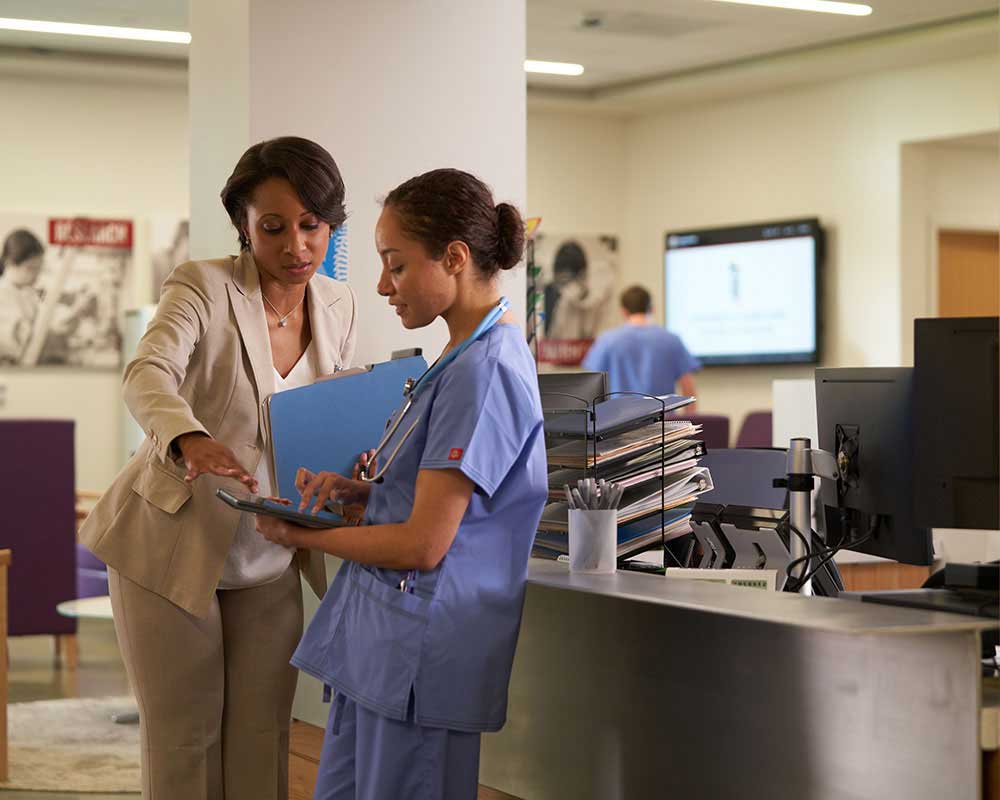Exactly How to Improve Performance in Medical Administration with Modern Tools
Exactly How to Improve Performance in Medical Administration with Modern Tools
Blog Article
Ideal Practices in Medical Management for Improving Performance and Minimizing Expenses
In the ever-evolving landscape of medical care, the quest of ideal practices in clinical management is critical for boosting efficiency and suppressing costs. By integrating advanced technologies such as electronic health and wellness documents and telemedicine, healthcare suppliers can streamline operations and enhance client care.
Leveraging Advanced Modern Technology
In today's rapidly evolving healthcare landscape, leveraging advanced technology is no more optional however necessary for effective clinical management. The assimilation of electronic solutions right into healthcare systems has changed the way facilities operate, improving procedures and improving individual care. Electronic Health Records (EHRs) are crucial, giving thorough client information that can be accessed instantly by authorized personnel, therefore minimizing redundancy and lessening mistakes. By systematizing person info, EHRs get rid of the demand for difficult documentation and facilitate smooth communication among doctor.
Telemedicine is another technical improvement that has revolutionized client communication. It provides benefit for both patients and health care experts by making it possible for remote examinations, which can reduce the demand for in-person sees and maximize consultation organizing. Additionally, telehealth systems can extend healthcare accessibility to country or underserved areas, linking spaces in treatment shipment.
In addition, the usage of Artificial Intelligence (AI) and device knowing is becoming progressively common in predictive analytics, enabling very early discovery of potential health and wellness problems and more informed decision-making. These innovations, when integrated successfully, can improve analysis precision and personalize patient treatment plans, eventually causing boosted health care results and functional efficiency.
Optimizing Resource Allowance
By purposefully managing resources such as workers, tools, and finances, healthcare centers can substantially improve their operational performance, improve client outcomes, and lower unnecessary expenditures. The first action in optimizing source allotment includes conducting a comprehensive evaluation of existing properties and recognizing areas where resources might be underutilized or exhausted.
Prioritizing source appropriation based on person requirements and solution demands is necessary. This entails lining up resources with high-demand areas, such as emergency treatment or specialized therapies, to make certain timely and reliable person treatment. Implementing versatile staffing designs can likewise enhance labor resources by changing employees appropriation in response to changing patient quantities. In addition, welcoming telemedicine and various other technical services can alleviate physical source restrictions by supplying different opportunities for patient-provider interactions.
Economic sources should be meticulously kept an eye on and allocated with tactical insight to support both temporary operational demands and long-term institutional objectives. This includes investing in training programs that boost personnel competencies and embracing energy-efficient practices that reduce operational expenses (medical administration). Eventually, a maximized source allotment approach cultivates a sustainable healthcare environment that is receptive, efficient, and financially sensible
Streamlining Workflow Procedures
When medical care facilities purpose to improve functional effectiveness, streamlining process procedures becomes a crucial emphasis. Reliable process decrease redundancy, eliminate unneeded actions, and improve sychronisation amongst medical care professionals. This strategy not only accelerates service delivery but likewise boosts the high quality of person treatment.

Following, technology assimilation plays a considerable role in simplifying process. Executing electronic health and wellness records (EHRs) and electronic medical professional order access (CPOE) systems minimizes paperwork, minimizes human mistake, and makes sure info comes to all relevant workers. Furthermore, leveraging telemedicine systems can enhance client assessments and follow-ups, reducing the pressure on physical framework.

Inevitably, streamlined operations cause set you back decreases and enhanced person satisfaction, promoting an extra sustainable health care atmosphere.
Enhancing Data Monitoring
Building upon structured workflows, enhancing information management ends up being a crucial part in advancing medical care management. Effective information management systems are vital for keeping exact find more individual records, enhancing decision-making, and guaranteeing conformity with regulative standards. By applying robust data monitoring remedies, health care facilities can enhance the top quality of patient care while at the same time reducing functional prices.
One trick facet of boosting data management is the combination of sophisticated electronic wellness document (EHR) systems. These systems help with the seamless exchange of person information across different divisions, decreasing replication of tests and reducing errors. A well-designed EHR system sustains data analytics, enabling doctor to recognize trends and make notified decisions pertaining to client care.
Additionally, guarding patient data is extremely important. Adopting thorough cybersecurity procedures, consisting of file encryption and routine audits, guarantees the stability and discretion of sensitive details. This not just safeguards people yet likewise preserves the institution's reputation.
Purchasing team training is another important variable. Informing health care specialists on data management techniques enhances their ability to properly use innovation, bring about improved patient outcomes. Finally, enhancing information management through sophisticated modern technology and comprehensive training is important for achieving performance and expense decrease in medical administration.
Fostering Collaborative Communication
A critical part in progressing medical management is cultivating joint communication among health care experts. Efficient interaction is critical for guaranteeing seamless client treatment, maximizing treatment end results, and lessening errors. By motivating open dialogue and control throughout multidisciplinary groups, health care organizations can enhance their operational efficiency and my review here decrease unneeded costs.
Central to this approach is the combination of interaction technologies such as electronic wellness records (EHRs) and secure messaging systems, which assist in the rapid exchange of crucial client information. These tools enable doctor to accessibility and share information in actual time, making certain that all staff member are educated and aligned in their decision-making procedures. Additionally, regular team meetings and interdisciplinary rounds can better promote a culture of collaboration and liability.
Training programs concentrated on improving interaction skills are likewise important. These programs can help personnel establish the ability to convey info clearly and pay attention proactively, hence minimizing misconceptions and cultivating an encouraging workplace. On top of that, embracing standard interaction protocols, such as SBAR (Situation, Background, Evaluation, Referral), can streamline the exchange of information, ensuring that critical website link details are shared succinctly and successfully. Inevitably, cultivating collaborative interaction causes enhanced healthcare distribution and expense financial savings (medical administration).

Conclusion
Including innovative modern technology, such as electronic health documents and telemedicine, together with enhanced resource allotment and streamlined operations processes, is crucial for enhancing performance in clinical management. Reliable information monitoring and cultivating collective communication amongst medical care teams are essential for decreasing redundancies and enhancing treatment quality. By prioritizing precautionary treatment and taking part in high quality improvement campaigns, healthcare organizations can achieve substantial expense savings and improved individual outcomes, therefore ensuring lasting healthcare delivery in a progressively complicated atmosphere.
Report this page